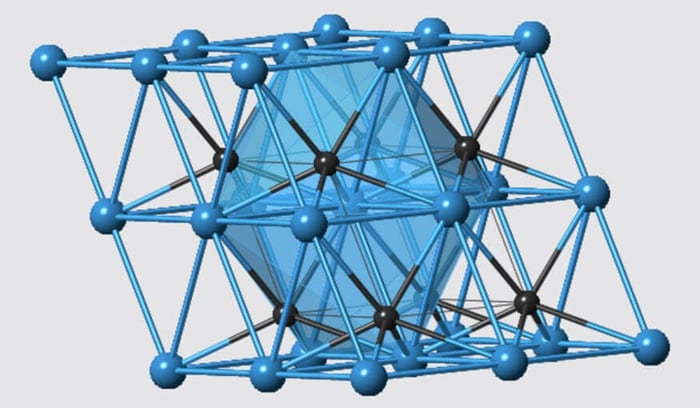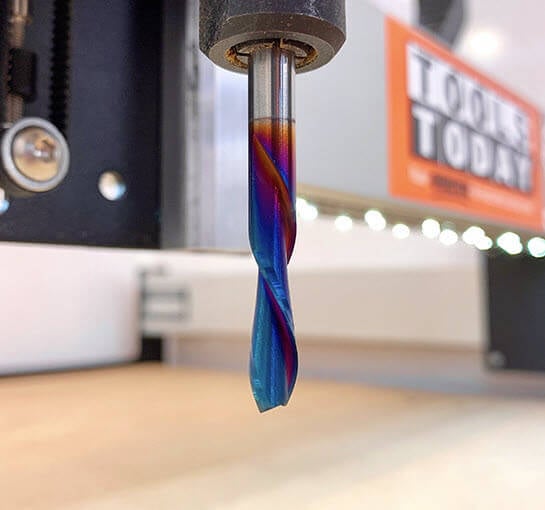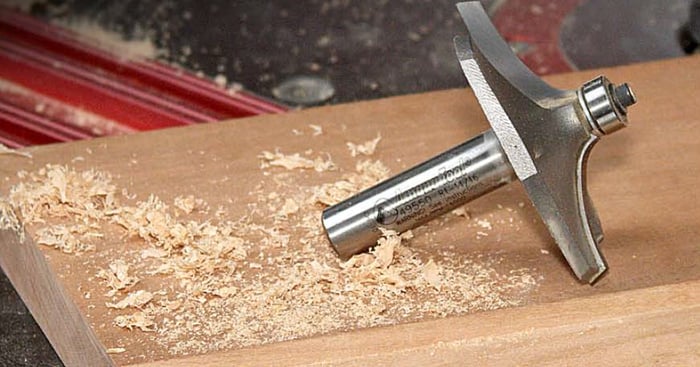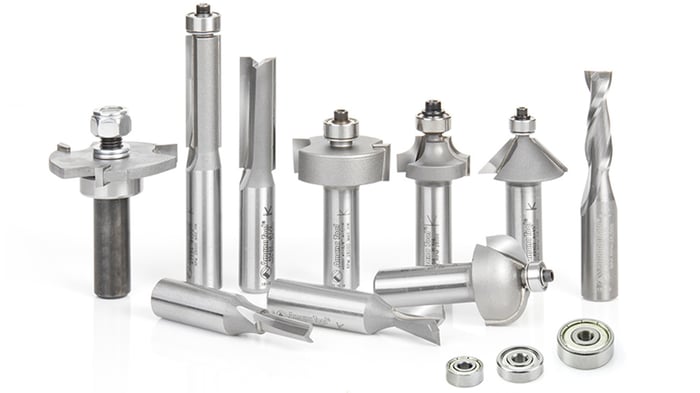
Carbide vs Steel (HSS) Router Bits: Which Should You Choose?
Table of Contents
- Quick Comparison: Carbide vs Steel (HSS)
- Performance Breakdown — what actually differs in the cut
- When to use steel (HSS)
- When to use carbide
- Buying considerations — what to check before adding to cart
- Care & maintenance
- Cost-per-cut: a quick way to judge value
- Practical examples
- Conclusion — make the decision by use case, not by sticker price
- FAQs
Short answer: for occasional hobby use, a quality steel (HSS) bit is economical; for hardwoods, production, or CNC runs, carbide-tipped bits deliver cleaner cuts and far longer life. Below is a clear, practical comparison and buying checklist so you can decide fast.
Quick Comparison: Carbide vs Steel (HSS)
| Feature | Steel (HSS) Router Bits | Carbide-Tipped Router Bits |
|---|---|---|
| Cost | Lower upfront cost — good for budget or very light use. | Higher upfront cost — better long-term value for frequent use. |
| Sharpness retention | Dulls quickly; requires frequent sharpening. | Stays sharp 5–10× longer under similar conditions. |
| Heat resistance | Low — overheating and loss of temper can occur during long or high-speed cuts. | Excellent — tolerates higher speeds and sustained cuts with less wear. |
| Cut quality | Acceptable on softwoods and short cuts; may tear out on hardwoods and composites. | Cleaner finish on hardwoods, laminates, plastics, and non-ferrous metals. |
| Durability | Prone to deformation and wear; shorter life. | Highly wear-resistant; can chip with impact or misuse. |
| Sharpening | Easy to re-hone with common sharpening tools. | Sharpenable, but requires diamond tools or professional service. |
| Best use case | Hobbyists, one-off trim work, or when budget is primary concern. | Professional shops, CNC production, hardwoods, plastics, and signmaking. |
Performance Breakdown — what actually differs in the cut
Sharpness & edge retention
Carbide's hardness means the cutting edge resists abrasion from silica, varnish, and abrasive materials like MDF. HSS will cut sharp at first but blunt faster, so finish quality drops sooner. For projects where surface finish matters (furniture parts, sign faces, finished moldings), carbide is the clear winner.
Heat & speed handling
Carbide tolerates higher spindle speeds and longer continuous cuts with less heat-related wear. Steel bits can lose temper (soften) if overheated, which shortens useful life and makes sharpening less effective.
Finish quality & tearout
Because carbide retains a keener edge, it reduces tearout on difficult grain and composite materials. If you’re routing laminates, plastics, or non-ferrous metals (e.g., aluminum), carbide is the safer choice.
Durability & failure modes
Carbide is wear-resistant but more brittle — it can chip if dropped or if a carbide edge hits a hidden nail or screw. HSS is tougher to impact but wears faster. In practice that means carbide lasts far longer under normal use but requires care to avoid edge chipping.
When to use steel (HSS)
- Occasional hobby or light trim work where purchase price is the guiding factor.
- When you plan to resharpen regularly and want to keep replacement costs low.
- Short, controlled cuts on softwoods or where finish is not critical.
When to use carbide
- Frequent routing, production runs, or commercial signmaking — the cost per useful cut is much lower.
- Routing hardwoods, veneered panels, laminates, plastics, and non-ferrous metals.
- When you need consistently clean edges and lower tool change downtime on CNCs.
Pro tip: For mixed shops, keep a small set of HSS straight bits for occasional use and a broader set of carbide-tipped spiral and profile bits for production and finish work.
Buying considerations — what to check before adding to cart
- Shank size: ¼" vs ½" — ½" shanks reduce deflection and vibration for better finish on longer cuts. For routers that accept a ½" shank, prefer ½" for production use.
- Bit profile & flute geometry: Spiral bits evacuate chips and reduce tearout; straight bits are simpler but may load on long cuts. Match flute/design to material.
- Coating & construction: Some carbide bits have anti-stick coatings or are fully solid carbide for specialty uses. Carbide-tipped is the common balance of cost and performance.
- Brand & manufacturing quality: Tighter tolerances and better brazing/adhesion of carbide tips produce longer life—avoid very cheap, unknown brands for production work.
- Intended material: Make choices by material first (hardwood, MDF, acrylic, aluminum) rather than by price alone.
Care & maintenance
- Keep bits clean: Resin buildup degrades cut quality. Use a solvent-based bit cleaner or a plastic scraper; avoid aggressive abrasives that damage carbide.
- Watch feeds & speeds: Slow feeds or excessive depth per pass generate heat and accelerate wear; tune feeds/speeds to material and bit type.
- Sharpen when necessary: HSS can be re-sharpened in-shop. Carbide needs diamond wheels or professional services — budget that into long-term tool costs.
- Store safely: Prevent tips from knocking together; use capped holders or foam blocks to protect edges.
Cost-per-cut: a quick way to judge value
If you want a simple financial rule of thumb: estimate how many parts you expect to route with a bit before replacement or sharpening. Divide the bit cost by that number to get cost per part. Carbide will usually be more expensive up front but much cheaper per part after the break-even point — that break-even often arrives fast in production or frequent hobby use.
Practical examples
- One-off shelf in pine: HSS or inexpensive carbide — either will work. Pick HSS if budget is tight.
- Custom furniture in walnut (lots of detail): Carbide for cleaner edges and longer life while maintaining finish quality.
- CNC signmaking with foam, HDU, or acrylic: Carbide spiral and V-groove bits deliver consistent results and tolerate abrasive materials.
Conclusion — make the decision by use case, not by sticker price
If you route regularly, work with hardwoods, run a CNC, or need showroom-quality edges, buy carbide-tipped bits. They give predictable, repeatable performance and a lower cost per cut over time. If you route rarely, are on a tight budget, and can resharpen, quality HSS bits are serviceable for light duty.
FAQs
Are steel (HSS) router bits still worth buying?
Yes. Steel, or high-speed steel (HSS), router bits are economical and still useful for light-duty or occasional hobby work. They sharpen easily and cost less up front. The tradeoff is they dull much faster than carbide, especially on hardwoods or abrasive materials.
Do carbide router bits really last longer?
Yes. Carbide-tipped bits typically last 5–10 times longer than steel bits, particularly when cutting hardwoods, MDF, laminates, and other abrasive materials. This extended lifespan often makes carbide the better long-term investment for anyone routing regularly.
Can carbide bits be sharpened?
Carbide bits can be resharpened, but unlike steel they require diamond wheels or professional sharpening services. Many shops send their carbide bits out for sharpening once they dull, which extends the life of the tool and reduces replacement costs.
Which is better for CNC machines, steel or carbide?
Carbide bits are strongly recommended for CNC use. They withstand higher spindle speeds, continuous cutting, and the heat generated during long production runs. Steel bits can work in a pinch, but they wear out quickly and reduce cut quality on a CNC.
Are carbide bits too brittle?
Carbide is harder and more wear-resistant than steel, but also more brittle. A carbide tip can chip if the bit is dropped or strikes a hidden nail. With normal care and proper storage, carbide bits are very durable and deliver much better long-term performance than steel.
What’s the best shank size for router bits?
Whenever possible, use ½″ shank router bits. They reduce vibration, run more smoothly, and produce cleaner edges, especially in hardwoods and during long cuts. Many routers accept both ¼″ and ½″ shanks, but ½″ is the preferred choice for stability and finish quality.




